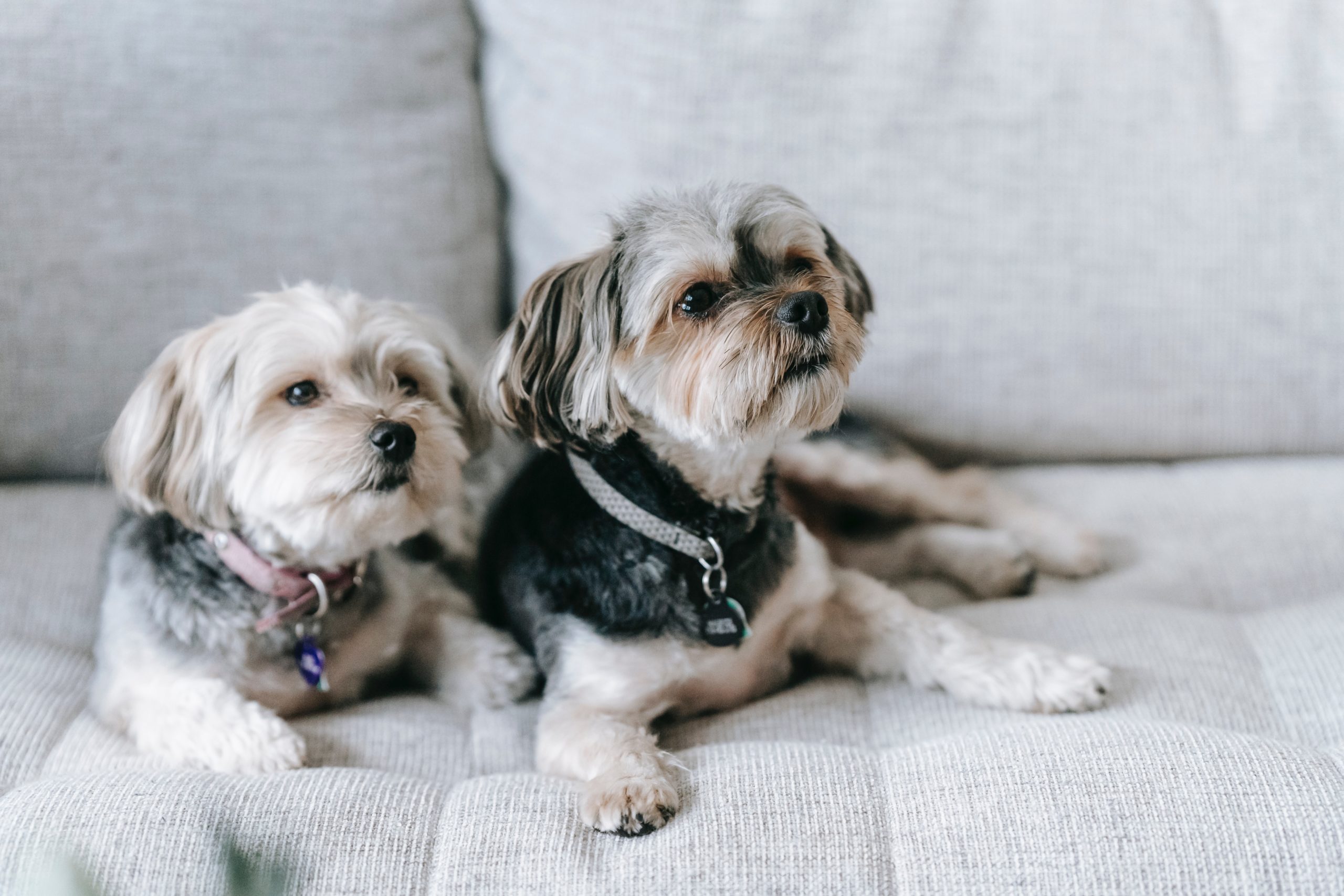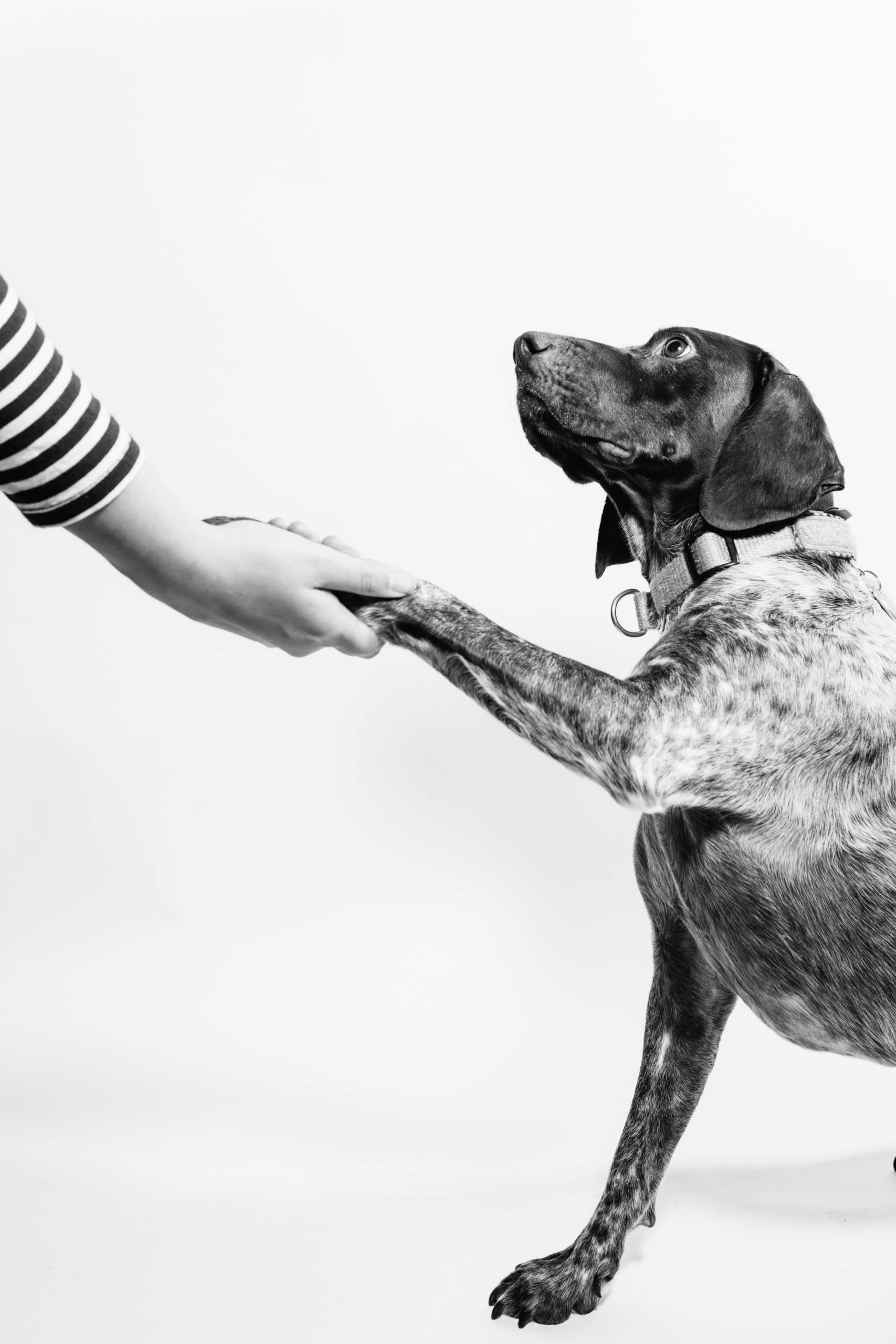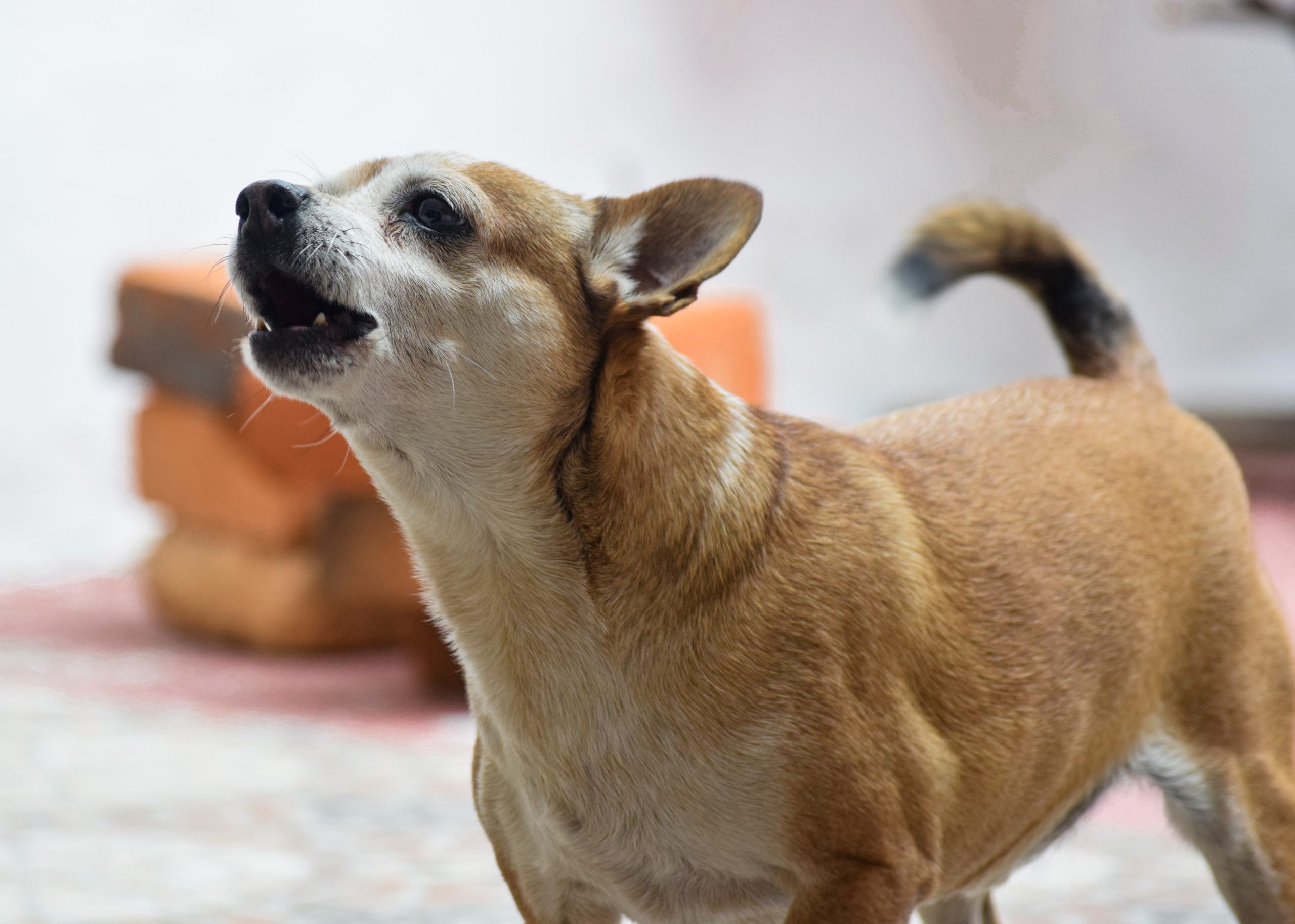House training a puppy can be a challenging yet rewarding task for pet owners. By understanding your furry companion’s needs and behavior, you’ll establish an effective routine that results in the formation of good habits.
In this blog, we’re going to explore key principles and preparations crucial for house training success, step by step guide on how to do it right, common challenges and their solutions as well as helpful tips you need to know.
Key Principles And Preparations For House Training A Puppy
To effectively house train a puppy, it is important to understand their needs and behavior, establish a designated potty area, provide a comfortable living space, and maintain consistency and routine.
Understanding Your Puppy’s Needs And Behavior
To successfully house train your puppy, it is crucial that you understand their needs and behavior. A young pup may not have complete control over its bladder and bowel movements, so having a good sense of when they need to go can significantly impact the training process.
Pay attention to signs such as sniffing around, circling, or whining.
Puppies also thrive on routines, making it essential for you to establish a consistent schedule for feeding, playtime, and bathroom breaks. Familiarizing yourself with your dog’s natural behavior patterns can give you insight into how frequently they need to eliminate throughout the day.
For example, most puppies require bathroom breaks first thing in the morning, after meals or naps, and just before bedtime.
Establishing A Designated Potty Area
It’s important to establish a designated potty area early on in house training. This can be an outdoor spot, or an indoor pee pad for those who live in apartments or high-rise buildings.
Take your puppy to this spot every time they need to go, and reward them with treats and praise after eliminating successfully. Creating a consistent routine around potty breaks will help your puppy learn faster and reinforce good habits.
It’s also important to clean up any accidents thoroughly using enzymatic cleaners that break down urine odors.
Providing A Comfortable Living Space
Your puppy’s living space should be a comfortable and safe environment. This helps them feel secure, which can aid in house training. Make sure your puppy has a designated sleeping area, such as a crate or bed, with soft bedding to lay on.
Place their food and water bowls in an easily accessible location away from their sleeping area.
Another thing to consider when providing a comfortable living space is making sure it is not too big or too small for your puppy’s size. If the living space is too large, your puppy may think it’s okay to eliminate in one corner while still having enough room for sleep and playtime.
On the other hand, if it’s too small, they won’t have room to move around comfortably or stretch out after waking up from naps which might cause frustration that could lead them back into bad habits of eliminating indoors.
Consistency And Routine
Consistency and routine are essential aspects of house training a puppy successfully. Puppies thrive on predictability, so sticking to a set schedule for feeding, playtime, and bathroom breaks can help them quickly learn when they should expect to go outside.
For example, taking your puppy out first thing in the morning after waking up, before and after meals or naps throughout the day can create an excellent routine for potty breaks.
Additionally, using consistent commands like ‘go potty’ or ‘do your business’ can help cue your pup to eliminate each time you take them outside.
Step-by-Step Guide To House Training A Puppy
To ensure successful house training, this section provides a comprehensive guide on key steps such as crate training, positive reinforcement, scheduling bathroom breaks, addressing accidents and separation anxiety.
Crate Training
Crate training is an effective way to help house-train your puppy. It involves using a crate or confinement area as a safe, comfortable space for your puppy when they are not supervised.
The idea behind crate training is that dogs instinctually avoid eliminating where they sleep, eat, and drink. This means that by providing your pup with a properly sized crate or confined area, you can teach them to hold their bladder and bowel movements until it’s time to go outside.
When beginning crate training, make sure the size of the crate allows your dog to stand up and turn around without feeling cramped. Gradually introduce your puppy to the crate by leaving treats inside and encouraging them with positive reinforcement when they enter voluntarily.
Positive Reinforcement
Positive reinforcement is a crucial aspect of successfully house-training a puppy. Using positive reinforcement techniques, such as praising and rewarding your puppy every time they eliminate outside, can help reinforce good behavior.
It’s important to note that punishment for accidents inside should be avoided as it may cause fear and delay the process.
Through consistent positive reinforcement, your puppy will learn that eliminating outside leads to praise and rewards.
Scheduling Bathroom Breaks
Consistency is key when it comes to scheduling bathroom breaks for your puppy. Taking them out at the same times every day will help establish a routine and reinforce good habits.
It’s important to keep in mind that younger puppies have smaller bladders and may need to go out more frequently – typically every 30-60 minutes during waking hours.
As they get older and gain better bladder control, you can start gradually increasing the time between potty breaks. Remember to always take them directly to their designated potty area so that they know what is expected of them.
Dealing With Accidents
It’s important to remember that accidents happen, even with the best house training efforts. When your puppy has an accident indoors, it’s essential to clean the area thoroughly so that there are no lingering odors that could attract them back to the same spot.
When you catch your pup in the act of eliminating indoors, interrupt them with a sharp “no” and take them immediately outside to their designated potty area. It’s essential not to punish or scold your puppy after accidents have happened because they won’t understand what they did wrong and may become fearful or anxious around you.
Addressing Separation Anxiety And Other Challenges
Separation anxiety can be a tough challenge when house-training a puppy. Many puppies become anxious and distressed when left alone, which can lead to destructive behavior and accidents in the house.
To address separation anxiety, it is important to gradually acclimate your puppy to being alone. Start by leaving for short periods and gradually increase the time you are away.
Another challenge that may arise during house training is marking behavior, where a dog may urinate or defecate in different areas of the house to establish their territory.
This behavior can be addressed through positive reinforcement and consistent training.
Other challenges like fear of going outside or excessive barking can also be addressed with patience, consistency, and professional help if needed.
Remember that every dog is unique and may require different approaches when it comes to house training.
Common House Training Challenges And Solutions
Common house training challenges include accidents in the house, marking behavior, fear of going outside, barking or whining, and potty training in apartments or high-rise buildings.
Discover effective solutions to overcome these obstacles and ensure successful house training for your furry friend.
Accidents In The House
Even when following the best practices for house training a puppy, accidents in the house can still happen. It’s important to clean up any messes thoroughly and avoid punishing your puppy as they may not understand why they are being scolded.
If accidents continue to occur, it may be helpful to reassess your schedule and make sure you’re taking your puppy out frequently enough or adjusting their diet to better control their bladder.
Consistency is key when forming good habits with house training, so stick with it even if there are setbacks along the way.
Marking Behavior
One common challenge in house training a puppy is marking behavior, where the puppy urinates or defecates to mark its territory. This can occur even after successful potty training and may be triggered by changes in the environment or routine.
To address this issue, it’s important to supervise the puppy closely and interrupt any attempts at marking with a firm “no” command. Consistently rewarding appropriate elimination outside can reinforce good behavior and reduce the need for territorial marking inside.
Additionally, neutering or spaying the puppy can help decrease hormonal influences that contribute to marking behavior.
Fear Of Going Outside
Some puppies may exhibit a fear of going outside, which can make house training a challenge. This fear may stem from a traumatic experience or simply be due to unfamiliarity with the outdoors.
To help your puppy overcome this fear, start by introducing them to the outdoors gradually.
It’s also important to create positive associations with being outside by rewarding your puppy for brave behavior such as exploring new areas or eliminating in designated potty spots.
Using treats or praise can reinforce good habits and encourage more outdoor exploration. Additionally, providing a comfortable leash and harness can alleviate any discomfort or anxiety associated with walking outside.
Barking Or Whining
If your puppy barks or whines while being house-trained, it is important to address this behavior. Barking and whining can be a sign of anxiety or discomfort, which may indicate a need for more frequent potty breaks or adjustments to the training routine.
One approach is to teach your puppy a quiet command, such as “hush,” through positive reinforcement training.
It’s also important to ensure that your puppy has plenty of opportunities for exercise and mental stimulation throughout the day. A tired puppy is less likely to engage in disruptive behaviors, including barking and whining.
Additionally, providing toys and other forms of entertainment can help keep your pup occupied during periods of restlessness.
Potty Training In Apartments Or High-rise Buildings
Living in an apartment or high-rise building can present unique challenges when it comes to potty training a puppy. In these situations, it may not be as easy to access outdoor areas for elimination purposes.
One approach is to create a designated indoor area that is easily accessible for your puppy. This could be a specific corner of the apartment outfitted with puppy pads or newspaper, or even a real grass patch made specifically for indoor use.
Consistently taking your pup to this designated spot will help them learn where they should go potty and avoid accidents elsewhere in the home.
It’s also important to keep up with frequent trips outside whenever possible – even if that means carrying your pup down multiple flights of stairs or using an elevator every time you need to go outdoors.
Tips For Successful House Training
Keep a record of your puppy’s progress, set up a consistent training routine and seek professional help if needed. These tips are essential to ensure successful house training for your furry friend.
Keeping A Record Of Progress
It is important to keep track of your puppy’s progress when house training. This record will help you identify patterns, successes, and any areas that need improvement.
You can use a simple chart or notebook to jot down the time of day your puppy pees or poops, as well as any accidents they have in the house.
Keeping a record also allows you to celebrate milestones along the way and make adjustments accordingly.
For instance, if you notice your puppy consistently eliminates outside after meals but has more accidents in between scheduled potty breaks during the day, then it may be necessary to adjust their schedule accordingly.
Seeking Professional Help If Needed
Sometimes, despite our best efforts, house training a puppy can still be a challenge. This is where seeking professional help comes in. There are many dog trainers and behaviorists who specialize in helping puppies with house training issues.
It’s important to keep in mind that seeking professional help doesn’t mean you’ve failed as a pet owner. Every puppy is different, and sometimes expert guidance is necessary to ensure your pup develops good habits that will last a lifetime.
Maintaining Consistency Even After Successful Training
Once your puppy has successfully completed house training, it’s important to maintain consistency in their routine. This means continuing to take them outside at regular intervals and using positive reinforcement when they eliminate in the designated potty area.
Even small changes like a new work schedule or different feeding times can have an impact on your dog’s bathroom habits. By continuing to monitor their behavior, you can quickly identify any issues and address them before they become bigger problems.
Conclusion
In conclusion, house training a puppy may seem like a daunting task, but with patience and consistency, it can be achieved successfully. By understanding your puppy’s needs and behavior, providing a comfortable living space, using positive reinforcement techniques, and creating a consistent schedule for potty breaks, you can achieve great results in no time.
Remember to reward good behavior consistently and keep records of progress along the way; this will help you track your puppy’s development throughout the training period.
Even when successful house training has been achieved, maintaining consistency with routine and praise is crucial to prevent regression.
FAQs:
1. What is the best age to start house training a puppy?
Puppies can begin house training as early as eight weeks old. It is important to start early, but also be patient and consistent with your training.
2. How often should I take my puppy outside for bathroom breaks during house training?
During the beginning stages of house training, puppies should be taken outside every 30 minutes to an hour. As they get older and better trained, you can gradually increase the time between bathroom breaks.
3. What are some signs that a puppy needs to go outside for a potty break?
Signs that a puppy needs to go outside include sniffing around, circling in one spot, whining or barking at the door, or showing restlessness.
4. How do I handle accidents during house training?
Accidents are bound to happen during the house-training process; when they occur, it’s important not to punish your puppy as this could lead to fear and anxiety towards you.
Instead, redirect them immediately outdoors and praise them for going in their designated area once there. Over time they will learn what behaviors bring bad consequences (indoor accidents) vs good ones (outdoor success).



